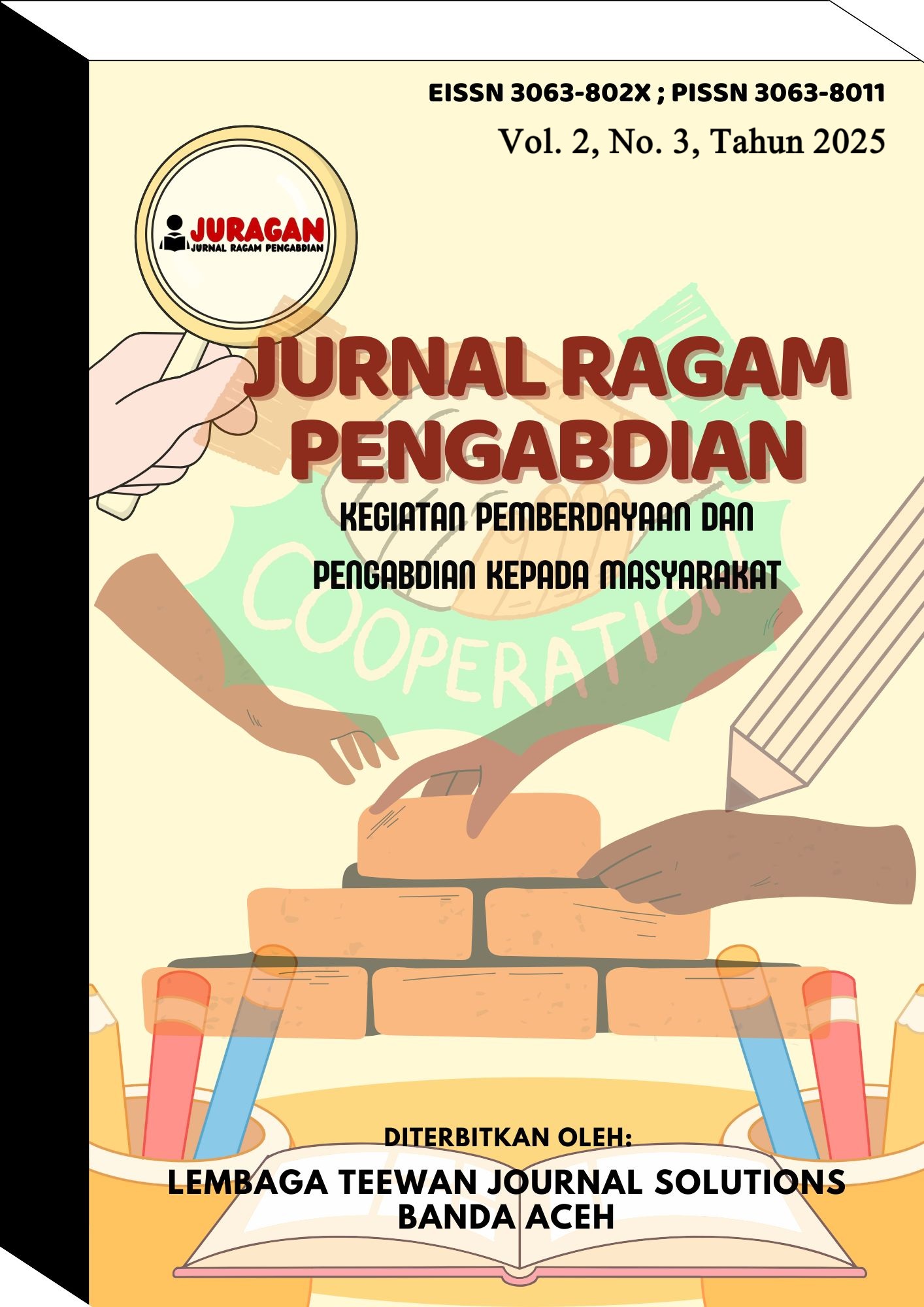Penyuluhan Pemilahan dan Pengolahan Limbah Kain
DOI:
https://doi.org/10.62710/xyyaq628Keywords:
waste, textile, hazard, treatmentAbstract
In the preliminary meeting with SMPK St. Agnes as a partner, it was known that the partner had implemented restrictions on the use of plastic materials, but had never received counseling material on the dangers of textile waste. This activity aims to increase awareness and knowledge of partners regarding the concept of sustainability, the hazards of fabric waste and how to sort and treat it. In this activity, various types of textile materials, their properties and how to utilize and process them after they are no longer used were explained. This activity also involved PT Panjimas as a company that processes textile waste into yarn raw materials, which was involved as one of the speakers. This activity was attended by 43 participants consisting of 20 students and 23 teachers/employees. The evaluation was carried out using a questionnaire. After the activity, the participants stated that there was an increase in awareness of the hazards of textile waste with details, 25 respondents were very aware, 16 were quite aware, and only 2 were slightly aware. No respondents felt that they had not changed. This community service activity succeeded in achieving its objectives, but improvements in methods, duration, and approaches were needed to ensure a greater and more sustainable impact in the future.
References
Balasubramanian, M., & Sheykhmaleki, P. (2024). Comprehending the consumer behavior toward sustainable apparel. Sustainability, 16(18), 8026.
Blake, J. (1999). Overcoming the ‘value‐action gap’in environmental policy: Tensions between national policy and local experience. Local environment, 4(3), 257-278.
Borg, C., Gericke, N., Höglund, H. O., & Bergman, E. (2014). Subject-and experience-bound differences in teachers’ conceptual understanding of sustainable development. Environmental education research, 20(4), 526-551.
Islam, M. M., Yin, R., & West, A. (2025). A Brief Review of Mechanical Recycling of Textile Waste. Textiles, 5(4), 41.
Juanga-Labayen, J. P., Labayen, I. V., & Yuan, Q. (2022). A review on textile recycling practices and challenges. Textiles, 2(1), 174-188.
Karim, M. R., & Hasan, M. M. (2022). Innovative Textile Recycling and Upcycling Technologies For Circular Fashion: Reducing Landfill Waste And Enhancing Environmental Sustainability. American Journal of Interdisciplinary Studies, 3(03), 01-35.
Körlü, A., Kanat, S., & Bahtiyari, M. İ. (2024). Introductory Chapter: Sustainability from Past to Future. In Roadmap to Sustainable Textiles. IntechOpen.
Koszewska, M. (2018). Circular economy—Challenges for the textile and clothing industry. Autex Research Journal, 18(4), 337-347.
Krulinasari, W., & Yusnandi, Y. (2021). Tinjauan Limbah Kain Sisa Produksi Menurut Hukum Internasional dan Hukum Nasional. In Prosiding Seminar Nasional Penelitian Dan Pengabdian Kepada Masyarakat (Vol. 2, No. 1, pp. 57-64).
Mulyani, L. D., Nopriansyah, U., Syarif, A. H., Susanti, E. D. (2021). Pemanfaatan limbah kain perca menjadi produk yang mempunyai nilai jual pada ibu-ibu rumah tangga. Al-Mu’awanah: Jurnal Pengabdian kepada Masyarakat, 2(2).
Niinimäki, K., Peters, G., Dahlbo, H., Perry, P., Rissanen, T., & Gwilt, A. (2020). The environmental price of fast fashion. Nature reviews earth & environment, 1(4), 189-200.
Okafor, C. C., Madu, C. N., Ajaero, C. C., Ibekwe, J. C., Nzekwe, C. A., Okafor, C., ... & Nzekwe, C. (2021). Sustainable management of textile and clothing. Clean Technol. Recycl, 1, 70-87.
Pensupa, N., Leu, S. Y., Hu, Y., Du, C., Liu, H., Jing, H., ... & Lin, C. S. K. (2018). Recent trends in sustainable textile waste recycling methods: current situation and future prospects. Chemistry and Chemical Technologies in Waste Valorization, 189-228.
Rahmawati, D. R., Rahmanto, A. A., & Hanifah, N. (2023). Penajaan Limbah Tekstil Padat Siasat Penyegaran Green Economy. Journal of Social Science Education, 4(2), 54-59.
Tang, K. H. D. (2023). State of the art in textile waste management: A review. Textiles, 3(4), 454-467






